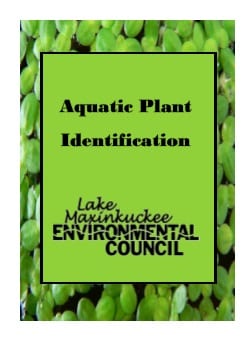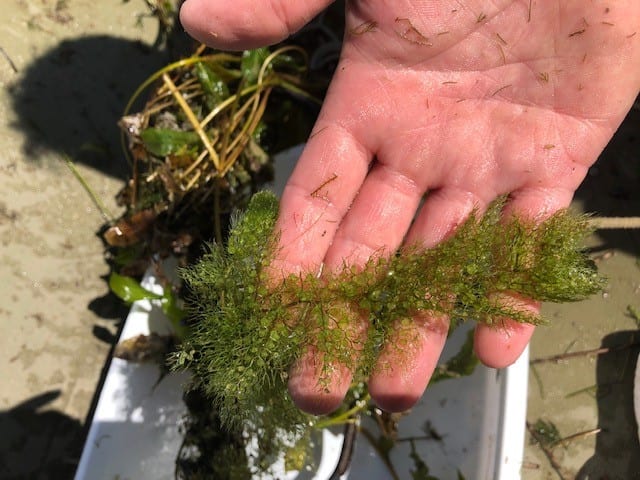Aquatic plants are an essential part of a healthy lake ecosystem and are often under-valued.
Benefits of Aquatic Plants
- Provide Habitat and Food for Fish and Wildlife
- Improve Water Clarity and Quality
- Protect Shorelines and Lake Bottoms
- Visually Attractive
Algae can become a nuisance when too many submerged
aquatic plants are destroyed.
Too Much of a Good Thing is a Bad Thing!
Dense plant growth, whether its native or invasive, gets in the way of our enjoyment of the lake. Very thick, dense plant growth can also be detrimental to fish.
Too many plants in the lake is usually caused by an overabundance of nutrients, caused by stormwater run-off rich with nutrients. These nutrients accelerate the natural process of lake aging (eutrophication), by increasing plant and algal growth, which in turn die and decay, depleting oxygen from the water. Once nutrients are in a lake, they can persist for decades, fueling plant and algae growth even after nutrient sources outside the lake have been addressed.

What Can You Do?

- Preventing and/or eliminating pollution and curbing sources of excess nutrients are vital steps for maintaining lake health. Check out our website page https://lakemax.org/protect-our-lake/ to learn more about what you can do to protect the lake.
- Become familiar with aquatic plant species – which ones are native and which ones are invasive. Stop by the LMEF office and pick up an Aquatic Plant Identification card deck and help monitor for invasive species.
- Support LMEF with your donation to help fund vegetation surveys and aquatic plant control.

Hi, I’m Debbie Palmer. I received a BS in Horticulture from Purdue University. Here at LMEF, I am responsible for outreach presentations, monitoring the lake and it’s wetlands, project manager for restoration and research projects, and act as a community resource for all things related to the well-being of Lake Maxinkuckee and its surrounding watershed. I completed Indiana Watershed Leadership Academy, volunteer with the Indiana Clean Lakes Program, Hoosier River Watch and Marshall County Lakes and Waters and serve as a Board Member for Indiana Lakes Management Society.


Recent Comments